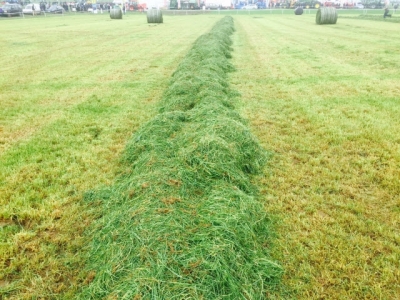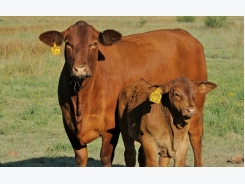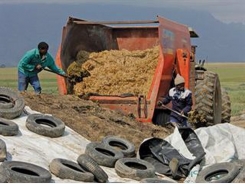Making the most of grass silage

In the second part of this series, Wim Hofman, cattle specialist for De Heus Animal Nutrition in the Netherlands, continues his discussion on managing pasture for production.
Good pasture managers apply appropriate fertiliser treatment, based on regular soil and grass sampling, analyses and recommendations.
Inorganic fertiliser has the advantage of being able to be measured and applied in a controlled way to meet the specific requirements of the pasture. However, it represents a significant cost in pasture production. Applying too little will impact negatively on the pasture while too much will waste money and can damage the environment and affect the health of the dairy herd.
Organic slurry on SA dairy farms is full of nutrients and microbial life beneficial to soil and grass. It can be used to cut down on the dairy operation’s fertiliser cost. To benefit from dairy slurry, a farmer should have it analysed for nutrient content, as levels can vary due to changes in the feeding regime.
“I recommend that SA pasture-based dairies use a combination of inorganic fertiliser and organic slurry to enhance the palatability and production of their pasture,” says Wim.
The dairy cow is the most cost-effective and efficient harvester of pasture grass. However, if a dairy farmer cannot graze his pasture at three-leaf stage, he should cut and wrap, or ensile the grass in a pit. This will give him a bank of supplementary roughage.
“Pasture grass should not be cut to below 6cm above the surface as this removes nutritional reserves stored in the bottom third of the stem,” Wim warns. “These reserves allow grass regeneration after grazing or cutting. To maintain uniform and optimal regrowth, after every second grazing a pasture should get a cleaning cut.”
Wim stresses the importance of regular sampling and analysis of ensiled grass to show which nutrients are lacking and which are excessive in the grass and soil of the pasture.
Silage pits are layered with grass harvested from different pastures at different times, so sampling must be carried out at various depths in the pit to generate an average nutritional value from that particular pit. A grass silage pit should also be sampled at various times because the average nutritional value of the ensiled grass will vary as it ferments in the pit. A dairy farmer can then adjust concentrate amounts accordingly to maintain the desired milk production.
This is an abbreviated version of an article in Farmer’s Weekly 31 January.
Có thể bạn quan tâm
Phần mềm

Phối trộn thức ăn chăn nuôi

Pha dung dịch thủy canh

Định mức cho tôm ăn

Phối trộn phân bón NPK

Xác định tỷ lệ tôm sống

Chuyển đổi đơn vị phân bón

Xác định công suất sục khí

Chuyển đổi đơn vị tôm

Tính diện tích nhà kính

Tính thể tích ao hồ



 Making grass silage while the sun shines
Making grass silage while the sun shines  Grass Silage: what you put in is what…
Grass Silage: what you put in is what…